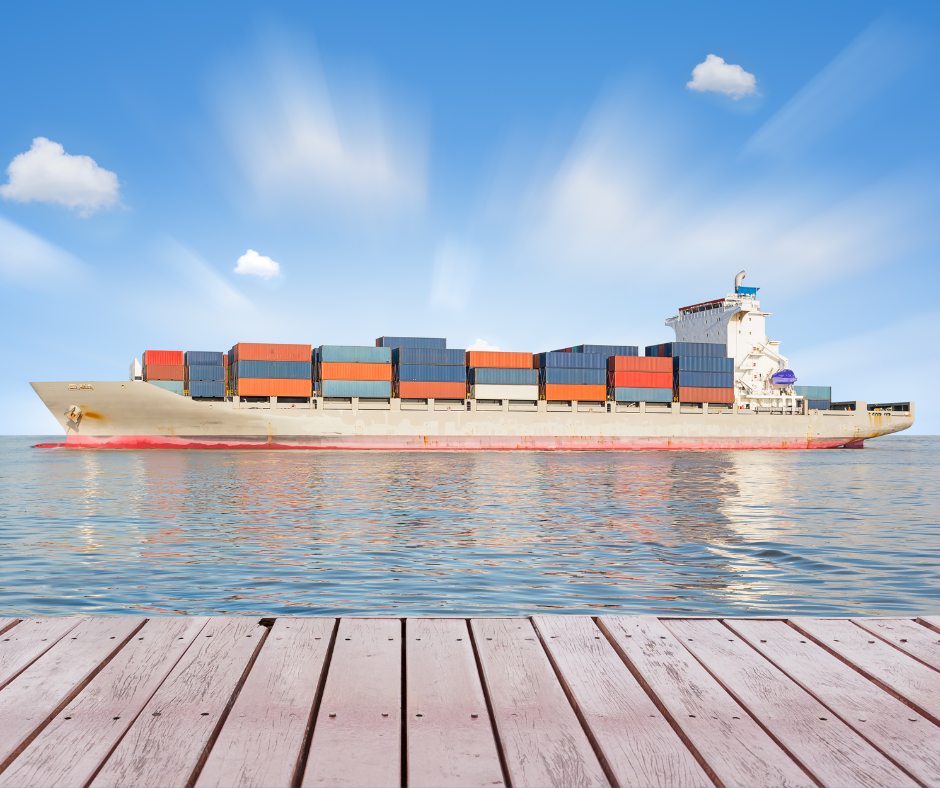 Every day, massive ships, planes, trucks and trains carry goods all over the world to bring essential products and materials to people who need them. Cars, clothing, food, computers, water—these are just some of the many things that get shipped around the world every day.
Every day, massive ships, planes, trucks and trains carry goods all over the world to bring essential products and materials to people who need them. Cars, clothing, food, computers, water—these are just some of the many things that get shipped around the world every day.
Yet, despite the critical importance of global trade, the details and statistics behind these constant activities are largely invisible to the average person.
In fact, most people probably have no clear picture of the real scope of global trade. Here are some incredible international trade statistics to help give perspective to this crucial industry.
1. America exceeded a record breaking $5 trillion in total trade volume in 2013.
$5 trillion is an incredible amount of money, and this amount just goes to show how important the United States is to world trade.
The U. S. exports important staples such as wheat and corn, and it is also a mega consumer for the imports of the world. $2.27 trillion came from exports, and $2.73 trillion came from imports.
2013 was a great year for American world trade, especially considering that in post-recessionary 2009 the total trade volume for the country was 42 percent lower, at $3.54 trillion.
The 2013 total trade volume also completely dwarfed the 1985 total trade volume of just over 1 trillion.
Whether it is electronics from Asia, wine from France, or cars from Germany, the United States imports in extremely high volume, and thus provides a critical market for global trade.
2. 5-6 million containers are transiting the ocean at any given time.
The average shipping container is twenty feet long and is large enough to hold forty to fifty refrigerators, or four hundred flat screen TV’s.
So, to think that there are at least five to six million of them on the high seas at any given time is pretty astonishing. These containers carry trillions of dollars of goods over the oceans. That’s what it takes to keep up with the needs of society.
3. There are more than 100,000 ships at sea that carry out trade.
In order to carry the minimum of 5-6 million containers that are constantly traveling the oceans, an army of ships is needed. That is exactly what the world has.
In comparison, the 55 largest national navies in the world combined have a total of 3,000 ships, less than 1/30 of the number of cargo ships carrying goods around the world.
The largest of these ships can carry around 18,000 containers. They are so huge that they resemble several city blocks worth of buildings that have been made to float.
4. Maersk’s containers alone would stretch halfway around the world if they were put in a line.
You know that a shipping company is big when its containers can span half the circumference of the planet, or approximately 12,000 miles.
Just imagine how much clothing, iron ore, oil, solar panels, shoes, and building materials could fit in a line that stretched from Buenos Aires, Argentina to Shanghai, China!
5. About 90 percent of the things an average person in a developed country owns is involved with international trade in some way.
If you look at a man in Canada, America, Great Britain, etc., he may be wearing shoes that were made in China, a watch made in Switzerland, a shirt made in Indonesia, driving a car made in Japan, and fueling it with gasoline from Saudi Arabia.
So many of the things that people use in everyday life come from distant locations. People may purchase their goods locally, but oftentimes those goods have gone through quite a journey to get to that retail location. Thankfully for the billions of people who rely on global trade, the shipping industry keeps delivering these items where they are needed.
6. There are 750,000 people who work as seafarers on ship crews involved with trade.
Journeys across oceans can take weeks for the large ships that carry goods. These ships all need crews to help navigate and run the ship while it moves from point A to point B.
So not only does the shipping industry move trillions of dollars of goods around the world every year, but it also employs three quarters of a million people. That is approximately the equivalent of the entire population of El Paso, Texas employed by shipping.
7. In 2013, there was close to $19 trillion of global merchandise exports.
$19 trillion is such a large amount of money that it is difficult to even think about. For perspective, the richest man in the world, Bill Gates, has a net worth of $80 billion.
So, the global merchandise exports of 2013 were roughly two hundred and thirty-five times the total wealth of the richest man on earth.
8. Over $220 billion of gold was exported in 2014.
The average price of gold in 2014 was $1,226.4. This means that in that year, over 17 million ounces of gold were exported. That’s a lot of gold!
Gold has always been a desirable commodity, so it is not surprising that it was exported in high volumes. This makes even more sense when considering the high price that gold was trading at in 2014.
9. Global exports have risen over 3000% since 1950.
In 1950, the total volume of global exports was roughly $61 billion. In 2013, it was nearly $19 trillion, or over three hundred times more than in 1950.
That is a tremendous amount of growth for roughly 65 years.
In fact, for the sake of perspective, just the total exports of crustaceans in 2013 (roughly $30 billion), would account for nearly half of the dollar amount of all of the global exports combined in 1950.
The main reasons for this growth are fewer global tariffs, better technology, product innovation, and increased foreign demand.
International trade is vital to sustaining the global economy, and life as we know it. The world is more integrated than ever before, and it will most likely continue in that direction for a long time to come.
Do any of these international trade statistics surprise you? Do you think international trade will continue to grow at this rate?







disqus comments